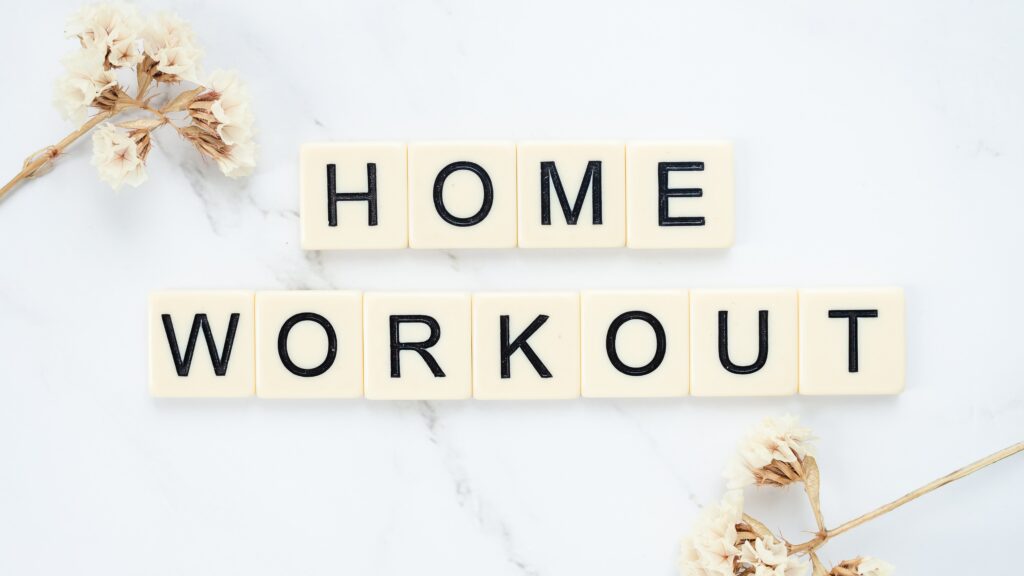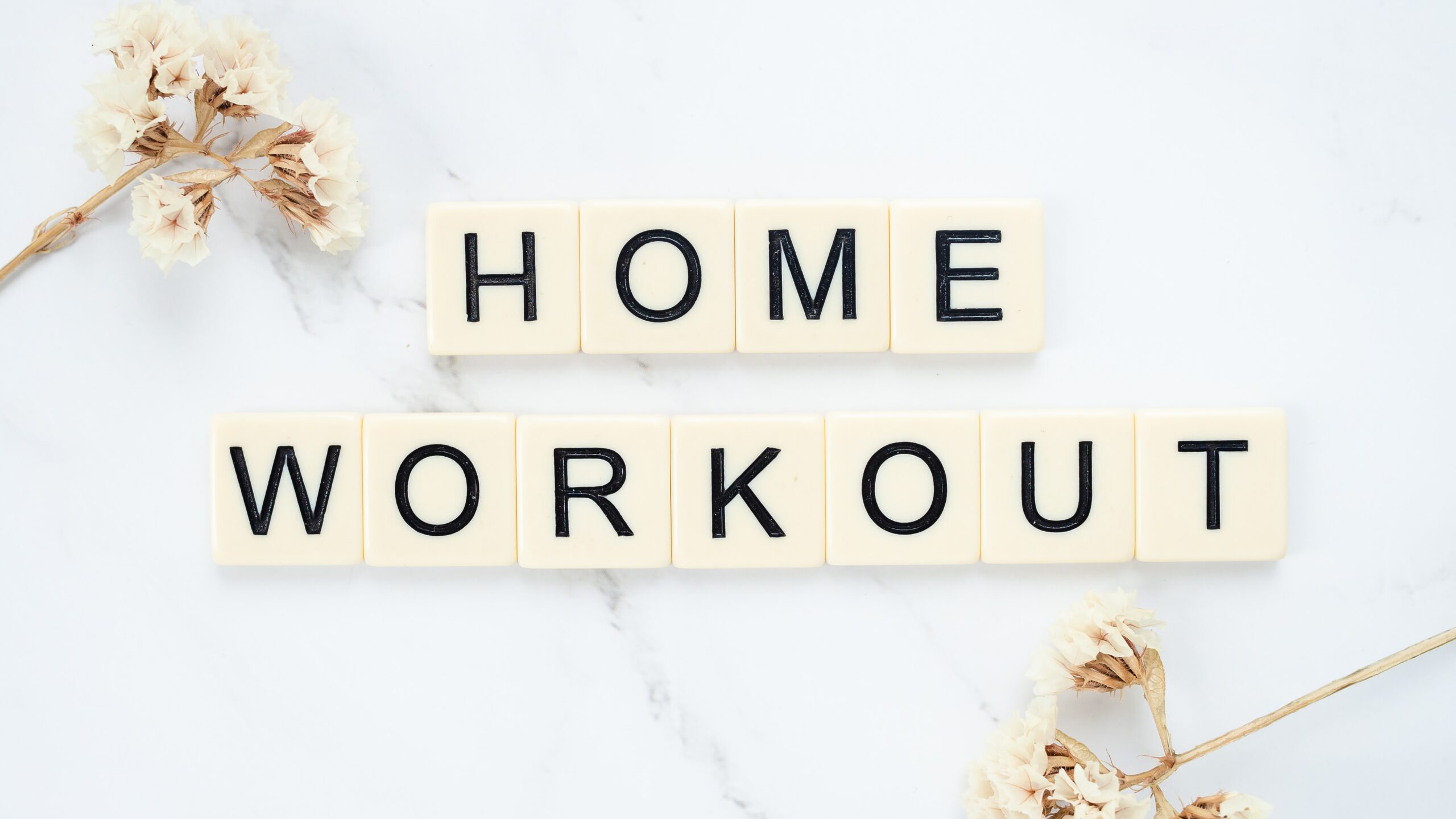Home workouts have surged in popularity, particularly in recent years, as more people recognize their convenience and flexibility. Whether it’s due to the closure of gyms, a busy lifestyle, or simply a preference for exercising in a personal space, home workouts provide a practical and efficient way to stay fit. This article will delve into the advantages of home workouts, various types of exercises you can do at home, and tips on how to maximize the effectiveness of your home workout routine.

The Rise of Home Workouts
Home workouts have become a global trend, driven by various factors:
- Accessibility: Unlike gyms, which require a membership and can be subject to distance and operating hours, home workouts are accessible anytime and anywhere.
- Cost-Effective: Exercising at home can save money spent on gym memberships, travel, and expensive fitness classes.
- Privacy: Home workouts offer a private environment where individuals can exercise without feeling self-conscious.
- Flexibility: The flexibility to fit workouts into any schedule, even if it’s just a quick 20-minute session during a lunch break.
Benefits of Home Workouts
Convenience
One of the most significant benefits of home workouts is their convenience. There’s no need to commute to a gym, and you can work out at any time that suits your schedule. This convenience makes it easier to maintain a consistent exercise routine.
Customization
Home workouts allow for a high degree of customization. You can tailor your workouts to your specific fitness goals, preferences, and abilities. Whether you prefer yoga, high-intensity interval training (HIIT), or strength training, you can create a personalized workout plan that suits your needs.
Comfort
Working out in the comfort of your own home can be more appealing than exercising in a crowded gym. You have control over your environment, including temperature, music, and space, which can make your workouts more enjoyable.
Time Efficiency
Home workouts can be more time-efficient. Without the need to travel to a gym or wait for equipment, you can spend more time exercising and less time on logistics.
Versatility
With minimal equipment, you can perform a wide range of exercises at home. Bodyweight exercises, resistance bands, dumbbells, and even household items can be used to create effective workouts.
Types of Home Workouts
There are numerous types of exercises you can do at home, catering to various fitness goals and preferences. Here are some popular categories:
Bodyweight Exercises
Bodyweight exercises require no equipment and can be done anywhere, making them ideal for home workouts. Some effective bodyweight exercises include:
- Push-Ups: Great for building upper body strength.
- Squats: Target the lower body, including quads, hamstrings, and glutes.
- Lunges: Enhance lower body strength and stability.
- Planks: Strengthen the core muscles.
- Burpees: A full-body exercise that combines strength and cardio.
Strength Training
Strength training can be done with minimal equipment, such as dumbbells, resistance bands, or kettlebells. Incorporating strength training into your home workout routine can help build muscle, increase metabolism, and improve overall fitness.
- Dumbbell Exercises: Bicep curls, shoulder presses, and deadlifts.
- Resistance Band Workouts: Squats, chest presses, and rows.
- Kettlebell Exercises: Swings, goblet squats, and Turkish get-ups.
Cardio Workouts
Cardio exercises are essential for improving cardiovascular health and burning calories. You can do effective cardio workouts at home without any equipment.
- Jumping Jacks: A simple yet effective cardio exercise.
- High Knees: Great for increasing heart rate and burning calories.
- Mountain Climbers: Combine cardio with core strengthening.
- Dance Workouts: Follow along with dance workout videos for a fun cardio session.
- Running or Jogging in Place: Easy to do in small spaces and effective for cardio fitness.
HIIT (High-Intensity Interval Training)
HIIT involves short bursts of intense exercise followed by brief periods of rest or low-intensity exercise. HIIT is highly effective for burning fat, improving cardiovascular fitness, and building strength.
- Tabata: A popular HIIT protocol involving 20 seconds of intense exercise followed by 10 seconds of rest, repeated for 4 minutes.
- Circuit Training: Rotate through a series of exercises with minimal rest in between.
- Interval Runs: Alternate between sprinting and walking or jogging.
Flexibility and Mobility
Flexibility and mobility exercises are crucial for maintaining a full range of motion and preventing injuries.
- Yoga: Incorporates flexibility, strength, and mindfulness.
- Pilates: Focuses on core strength and flexibility.
- Dynamic Stretching: Prepares the body for exercise by improving mobility.
- Static Stretching: Helps to lengthen muscles and improve flexibility.
Core Workouts
A strong core is essential for overall fitness and stability. Core workouts can be done with or without equipment.
- Crunches: Target the abdominal muscles.
- Russian Twists: Engage the obliques.
- Leg Raises: Strengthen the lower abs.
- Bicycle Crunches: Combine cardio with core strengthening.
- Stability Ball Exercises: Enhance core stability and strength.
How to Make the Most of Your Home Workout Routine
To maximize the effectiveness of your home workouts, consider the following strategies:
1. Create a Dedicated Workout Space
Having a designated area for exercising can help you stay focused and motivated. Ensure your space is free from distractions and has enough room for you to move comfortably. Equip your workout area with essential items like a yoga mat, dumbbells, resistance bands, and a stability ball.
2. Follow a Structured Plan
A structured workout plan can provide direction and ensure balanced progress. Whether you design your own plan or follow a program from a fitness app or online trainer, having a clear roadmap will help you stay on track and achieve your goals.
3. Incorporate Variety
Variety is key to preventing boredom and ensuring comprehensive fitness. Mix different types of workouts, such as cardio, strength training, flexibility exercises, and HIIT, to keep things interesting and target different muscle groups.
4. Set Realistic Goals
Setting achievable goals helps maintain motivation and provides a sense of accomplishment. Break down larger goals into smaller, manageable milestones. For example, aim to complete a certain number of workouts per week or increase the number of repetitions in a strength exercise.
5. Use Technology
Leverage fitness apps, online classes, and virtual trainers to guide your workouts and track your progress. Apps like MyFitnessPal, Nike Training Club, and Peloton offer a wide range of workouts and tracking features. Online platforms like YouTube also provide numerous free workout videos.
6. Warm Up and Cool Down
Warming up before exercise prepares your body for the workout and reduces the risk of injury. A proper warm-up can include dynamic stretches, light cardio, or mobility exercises. Cooling down after your workout helps to lower your heart rate and promotes recovery. Include static stretches and deep breathing exercises in your cool-down routine.
7. Stay Consistent
Consistency is crucial for achieving long-term fitness goals. Make exercise a regular part of your routine, even if it’s just a short session. Consistent workouts, even if brief, can yield significant benefits over time.
8. Monitor Progress
Track your workouts, progress, and any changes in your fitness levels. Keeping a workout journal or using a fitness app can help you stay motivated and adjust your plan as needed.
9. Prioritize Recovery
Rest and recovery are essential components of any fitness routine. Ensure you’re getting enough sleep, staying hydrated, and giving your muscles time to recover between workouts. Incorporate rest days and active recovery, such as light stretching or walking, into your schedule.
10. Stay Motivated
Finding ways to stay motivated can help you maintain a consistent workout routine. Set rewards for achieving milestones, vary your workouts to keep them interesting, and consider working out with a friend or joining an online fitness community for support and accountability.
Sample Home Workout Routine
Here’s a sample weekly home workout routine that incorporates various types of exercises for a balanced approach to fitness:
Monday: Full-Body Strength Training
- Warm-Up: 5 minutes of light cardio (jumping jacks, high knees)
- Circuit (repeat 3 times):
- Push-Ups: 12 reps
- Squats: 15 reps
- Dumbbell Rows: 12 reps per arm
- Lunges: 12 reps per leg
- Plank: 1 minute
- Cool-Down: 5 minutes of static stretching
Tuesday: Cardio and Core
- Warm-Up: 5 minutes of dynamic stretching
- Cardio Intervals (repeat 3 times):
- Jump Rope: 2 minutes
- Mountain Climbers: 1 minute
- High Knees: 1 minute
- Core Circuit (repeat 2 times):
- Crunches: 20 reps
- Russian Twists: 15 reps per side
- Leg Raises: 15 reps
- Bicycle Crunches: 20 reps
- Cool-Down: 5 minutes of static stretching
Wednesday: Rest or Active Recovery
- Light activity such as walking, yoga, or stretching
Thursday: Lower Body Strength and Flexibility
- Warm-Up: 5 minutes of light cardio
- Circuit (repeat 3 times):
- Squats: 15 reps
- Glute Bridges: 20 reps
- Step-Ups: 12 reps per leg
- Calf Raises: 15 reps
- Plank: 1 minute
- Flexibility: 15 minutes of yoga or stretching
Friday
: HIIT Workout
- Warm-Up: 5 minutes of dynamic stretching
- HIIT Circuit (repeat 4 times):
- Burpees: 30 seconds
- Jump Squats: 30 seconds
- Push-Ups: 30 seconds
- Rest: 30 seconds
- Cool-Down: 5 minutes of static stretching
Saturday: Upper Body Strength and Mobility
- Warm-Up: 5 minutes of light cardio
- Circuit (repeat 3 times):
- Push-Ups: 12 reps
- Dumbbell Shoulder Press: 12 reps
- Dumbbell Bicep Curls: 15 reps
- Tricep Dips: 12 reps
- Plank: 1 minute
- Mobility: 15 minutes of yoga or stretching
Sunday: Rest or Active Recovery
- Light activity such as walking, yoga, or stretching
Conclusion
Home workouts offer unmatched convenience and flexibility, making it easier for individuals to maintain a consistent and effective fitness routine. By creating a dedicated workout space, following a structured plan, incorporating variety, and staying motivated, you can achieve your fitness goals from the comfort of your own home. Remember, the key to success is consistency and finding a routine that works for you. With dedication and perseverance, home workouts can be a powerful tool in your journey to optimal fitness and overall well-being.
